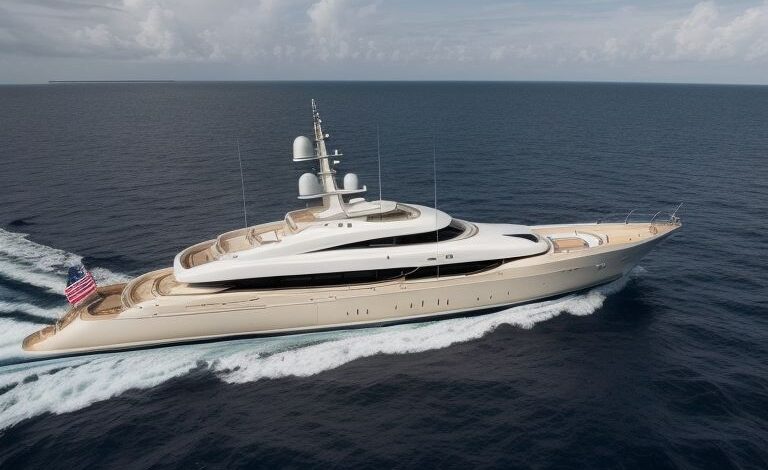Bayesian NYT Sues: The Legal Battle Over the Yacht Sinking Incident

The Bayesian NYT sues case has become a hot topic in the media following the tragic sinking of the luxury yacht, Bayesian, back in August 2024. The Italian Sea Group (TISG), the owner of Perini Navi, is taking legal action against The New York Times for publishing an article on October 31, 2024, about the incident. TISG claims that the newspaper’s investigation contained misleading information and harmed the reputation of the iconic yacht brand.
The New York Times article, which discussed the yacht’s design flaws, raised questions about its stability, ballast positioning, and overall safety. However, TISG strongly refutes these claims, arguing that the article misrepresented technical details and used unnamed sources. The company has vowed to protect its reputation and prove that Bayesian’s design meets all safety regulations and standards. Let’s dive deeper into the key points of the Bayesian NYT sues story and what’s at stake in this legal battle.
The Bayesian NYT sues legal battle is an important story that impacts the world of yachting. The sinking of the Bayesian yacht made headlines, not only because it was a luxury yacht but because it involved well-known individuals and a tragic loss of life. When The New York Times published its investigation, many people in the yachting industry took notice. They saw it as a challenge to the reputation of yacht manufacturers and the safety of these expensive vessels.
For yacht builders and designers, this case is a reminder of how important it is to ensure their designs meet safety standards. The Bayesian NYT sues lawsuit could change how the public views the safety of luxury yachts. If the New York Times’ claims about the design of the yacht are proven to be wrong, it could help rebuild trust in yacht manufacturers. On the other hand, if the claims turn out to be true, it might raise concerns across the entire industry about the safety of high-end yachts.
The case also highlights how legal action can protect a company’s reputation. TISG, the owner of Perini Navi, is fighting back to defend the yacht’s design and its safety. This lawsuit shows the lengths companies will go to in order to protect their brand, especially in an industry where reputation matters so much.
Table of Contents
Bayesian NYT Sues: What The New York Times Got Wrong About the Yacht’s Design

In the Bayesian NYT sues case, one of the biggest points of disagreement is about the yacht’s design. The New York Times article claimed that the yacht’s tall mast made it more likely to capsize. However, TISG disagrees with this statement, saying that the design of the yacht meets all safety standards and has been approved by experts.
TISG has said that the yacht was built to the highest standards by renowned naval architect Ron Holland. They argue that the claims in the NYT article about the yacht’s design are not supported by solid evidence. For example, the newspaper suggested that the single-mast design was a major issue, but TISG insists that this design choice is safe and commonly used for similar yachts.
The disagreement over the design is one of the central points in the Bayesian NYT sues lawsuit. While the NYT claimed that the yacht’s design led to its sinking, TISG argues that the yacht’s stability was in line with industry standards. They also point out that the yacht’s design was approved by authorities and passed all safety tests.
How the Bayesian Sinking Led to the NYT Lawsuit: The Timeline Explained

The Bayesian NYT sues case didn’t happen overnight. The legal battle started after the yacht sank during a storm in August 2024, which led to the tragic loss of seven lives. The sinking attracted a lot of media attention, and soon, The New York Times published an in-depth article questioning the yacht’s safety features and design.
In response to the NYT’s claims, TISG quickly filed a lawsuit, arguing that the article was full of inaccuracies and misleading statements. They stated that the yacht was fully compliant with safety regulations and that the article was damaging to their brand. This led to the legal fight that is still ongoing.
The timeline of events shows how quickly things escalated. What started as a tragic accident quickly turned into a high-profile legal case. For TISG, this lawsuit is about more than just clearing their name. It’s about protecting the reputation of the Perini Navi brand and ensuring that future yacht designs are not unfairly criticized.
The Science Behind the Design: Why TISG Defends Bayesian Against NYT’s Claims
TISG’s Explanation of the Yacht’s Stability
TISG has strongly defended the design of the Bayesian yacht. They argue that it meets all the required stability standards, which are essential for safety at sea. The company points out that the yacht was designed by one of the most respected naval architects in the world, Ron Holland. According to TISG, the yacht’s single-mast design does not make it more likely to capsize, as suggested by the New York Times.
TISG has emphasized that the yacht passed all necessary stability tests and was built to withstand harsh sea conditions. The company points to the fact that the yacht was registered and certified by authorities, including the Maritime and Coastguard Agency. This certification confirms that the yacht was safe to sail, and TISG believes that the NYT’s claims do not reflect the true facts about the design.
Understanding the Ballast Positioning
Another key point in the Bayesian NYT sues case is the yacht’s ballast system. The NYT article claimed that the positioning of the ballast made the yacht unstable. However, TISG argues that the ballast was positioned to balance the yacht’s heavy mast and prevent tipping. The company explains that this arrangement was done to maintain the center of gravity and ensure the yacht’s stability.
TISG also points out that the fixed ballast was placed in such a way that it did not affect the yacht’s buoyancy. The company has provided detailed explanations about the safety features of the yacht, including its watertight doors and ventilation systems. According to TISG, the yacht’s design followed all regulations and was built with safety in mind, leaving no room for the accusations made by the New York Times.
Bayesian NYT Sues: Understanding the Legal Battle Over Yacht Safety Standards

The Bayesian NYT sues case has raised important questions about yacht safety standards. TISG is using the legal system to challenge the claims made in the New York Times article, which suggested that the yacht’s design was responsible for the sinking. The case has brought attention to the fact that yacht manufacturers must meet strict safety standards to ensure the protection of everyone on board.
For yacht designers and builders, this lawsuit highlights the importance of complying with safety regulations. TISG has pointed out that the Bayesian yacht was tested and certified by regulatory bodies, which makes the claims made by the NYT seem unfounded. The outcome of this case could have an impact on future regulations and how yacht safety is evaluated in the industry.
Conclusion
In conclusion, the Bayesian NYT sues case shows how serious the debate about yacht safety can get. The sinking of the Bayesian yacht was a tragic event, and it sparked a lot of questions about its design. TISG, the company that owns the yacht, has firmly defended its design, saying it meets all safety standards. They are using the legal system to clear their name and protect their brand.
The outcome of this lawsuit will be important not only for TISG but for the entire yachting industry. It will help set the record straight about what happened and how yacht designs should be evaluated. Whether or not the accusations are proven true, this case will have a lasting impact on how yachts are built and how safety is tested in the future.
FAQs
Q: What is the “Bayesian NYT sues” case about?
A: It’s a legal battle where The Italian Sea Group (TISG) is suing The New York Times over claims that the design of the Bayesian yacht led to its sinking.
Q: Why did the Bayesian yacht sink?
A: The yacht sank during a storm off the coast of Sicily in August 2024. The exact cause is still under investigation.
Q: What did The New York Times say about the Bayesian yacht?
A: The New York Times suggested that the yacht’s tall mast made it more likely to capsize, but TISG disagrees with this claim.
Q: What is TISG arguing in the lawsuit?
A: TISG is arguing that the claims made in the New York Times article about the yacht’s design and stability are false and not supported by evidence.
Q: How could this lawsuit affect the yachting industry?
A: This lawsuit could impact how yacht designs are judged and could lead to changes in safety regulations for luxury yachts in the future.




